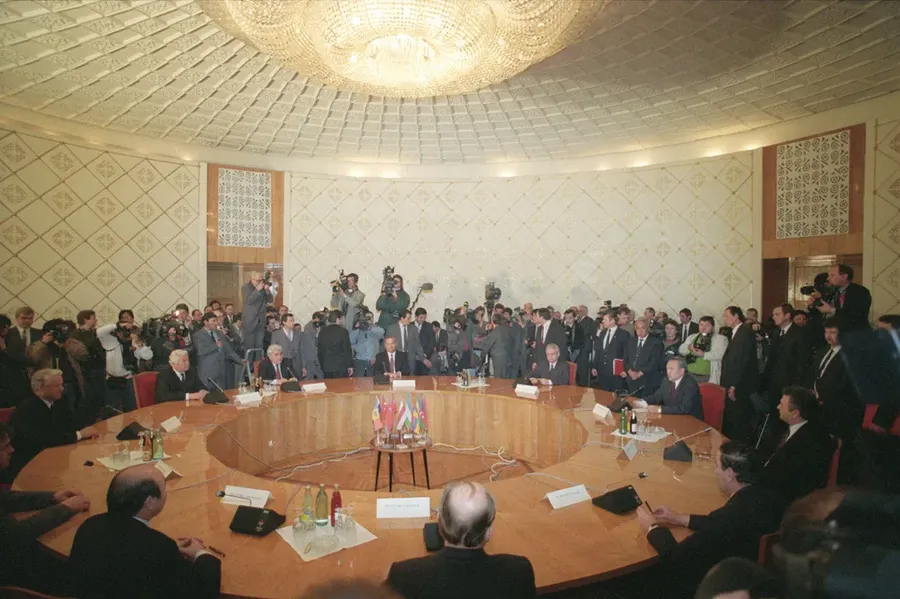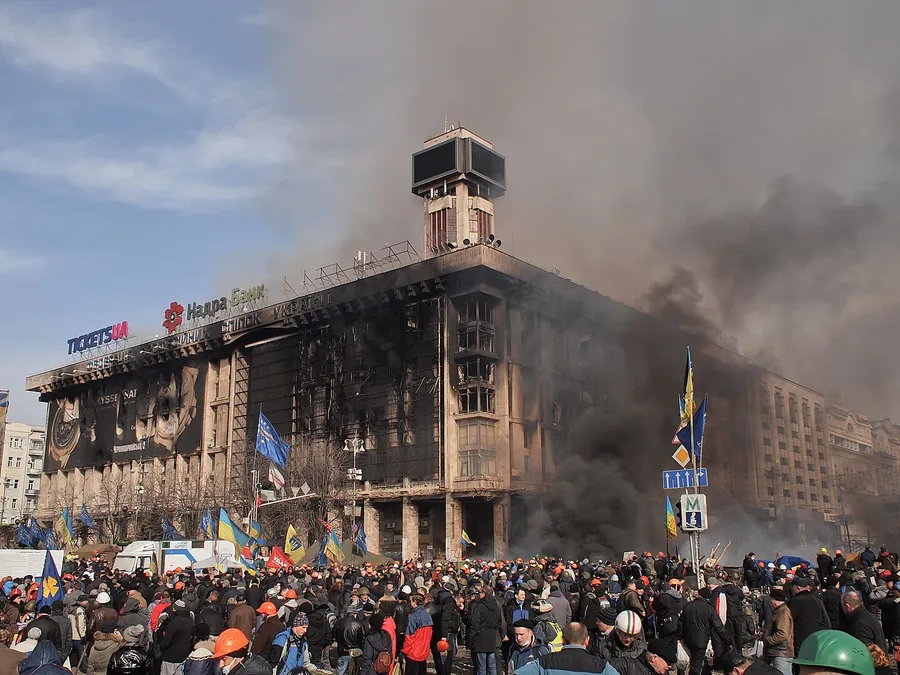From Inevitability to Eternity: The Road to Unfreedom by Timothy Snyder
by Blakely B.
Our worldviews largely shape the way we engage with politics. Historian Timothy Snyder, in The Road to Unfreedom, argues that two worldviews dominate modern political life: the politics of inevitability and the politics of eternity. Inevitability imagines time as a straight line into the future, with history moving automatically toward progress, democracy, and prosperity. Eternity imagines time as a circle, with the same threats, enemies, and dangers returning again and again in a continuous cycle of victimhood and crisis. Each perspective provides a structure for how societies tell stories about themselves, how leaders justify power, and how citizens respond to crisis.
The Comfort of Inevitability
After the Cold War, Snyder describes how the West embraced inevitability. They believed that the future was simply “more of the present,” and that the laws of progress were already known. In the United States, this meant a story where free markets naturally produce democracy and happiness. In Europe, it meant that nations had learned from war to value peace, and that integration would guarantee prosperity.
Communism, too, had offered its own narrative of inevitability. It promised that technological progress would drive class struggle, that class struggle would culminate in revolution, and that revolution would inevitably deliver a utopian society. When that story collapsed in 1991, the Western narrative seemed triumphant. Europeans hurried to complete the EU, and Americans assumed the end of communism confirmed the superiority of capitalism. Thus, a millennial generation grew up in this environment “without history.” This is not to suggest that young people didn’t learn dates, wars, or names of presidents. Rather, Snyder argues that being raised inside a politics of inevitability fostered a mindset in which history itself felt irrelevant. If the future is guaranteed, then the struggles and contingencies of the past seem disposable. What was lost were the intellectual tools that history provides, such as the ability to see fragility, recognize patterns of collapse, and understand that progress requires effort.

The Alma-Ata Protocols, the official end of the Soviet Union. December 21st, 1991. By RIA Novosti archive, image #140800 / Yuriy Kuydin / CC-BY-SA 3.0, CC BY-SA 3.0, https://commons.wikimedia.org/w/index.php?curid=18134867
Inevitability turns every event into a minor detail in the march of progress. It discourages citizens from asking what their institutions are, why they are good, or how they might be improved. Snyder captures this tendency with a brutal simplicity, describing inevitability as “the idea that there are no ideas.” Its familiar refrain is that there are no alternatives.
For a time, this story was soothing. But the very comfort that made inevitability attractive also made it fragile. Rising inequality and stagnating mobility eroded faith in progress. When crises came, inevitability provided poor guidance. Americans, Snyder notes, often responded to shocks either by pretending they weren’t really happening or by insisting they were wholly unprecedented. Both reactions paralyzed responsibility. When inevitability breaks, it does not fade quietly, but collapses into something darker.
The Seduction of Eternity
Eternity politics begins where inevitability fails. If inevitability imagines time as a straight line toward progress, eternity recasts it as a cycle of repeated threats. The nation becomes an eternal victim, forever innocent, forever besieged. What was once a promise of future prosperity hardens into a myth of timeless danger. As Snyder puts it, eternity offers citizens “the sense that nothing is new under the sun, that all that happens is one great cycle of threat.” This vision is seductive precisely because it relieves people of responsibility. The enemy’s return is inevitable, so nothing depends on us.
The passive faith in progress has been replaced with the constant churn of calamity. Leaders manufacture crises and “instruct their citizens to experience elation and outrage at short intervals, drowning the future in the present.” The hard work of reform gives way to a rhythm of outrage, catharsis, and spectacle. Fear becomes exhilarating. Solidarity turns brittle, defined less by common purpose than by the identification of enemies. And for those who see themselves as the nation’s true guardians, “the pleasure of life is that it can be made nastier, more brutish, and shorter for others.”
Eternity also reshapes truth. Where inevitability once wove facts into a narrative of progress, eternity strips facts of meaning. Falsehoods flood the public sphere; then all news is denounced as fake; finally, only the leader’s own performance seems real. Politics becomes theater, history collapses into myth, and citizens are drawn into what Snyder calls “the politics of spectacle.” The promise of progress is replaced with the drama of siege, and the burden of responsibility with the thrill of innocence.
Russia as the Vanguard of Eternity
If eternity was a temptation in the West, it has become a governing principle in Russia. With no secure principle of succession, Vladimir Putin could not promise a future beyond himself. He solved the problem by making the present appear eternal: endless crisis, endless threats, endless Putin. Law became whatever the leader declared. Political order became a cycle of confrontation without resolution.
Foreign policy reflected the same logic in what Snyder calls it “strategic relativism”. Russia cannot strengthen itself, therefore it weakens others. By destabilizing democracies abroad, Russia exports its dysfunction, making its problems look normal. If Americans and Europeans distrust democracy at home, Russians are less likely to demand it themselves.
Ukraine’s 2014 revolution revealed the clash between inevitability and eternity with stark clarity. For Ukrainians, European integration represented a fragile but real path toward a better future. For Europeans, integration was taken for granted. When Russia invaded, Ukrainians fought for progress while Europeans hesitated, unable to see that their own project was under attack.

Euromaidan's HQ, located in the Trade Unions Building in Kyiv, burns during the 2014 Ukrainian Revolution. By Amakuha - Own work, CC BY-SA 3.0, https://commons.wikimedia.org/w/index.php?curid=31248925
Eternity Comes West
Snyder warns that Russia’s turn to eternity is not an anomaly, but a warning. The complacency of inevitability created vulnerabilities that eternity politics could exploit. When inevitability collapsed, eternity rushed in, often carried by the tools of democracy.
The 2016 U.S. election, shaped by Russian interference, made this dynamic unmistakable. Americans who had believed their institutions unassailable discovered their fragility only in the moment of breakdown. Some insisted foreign interference was not really happening, others declared it so unprecedented that nothing could be done. In both cases, responsibility dissolved. Into that vacuum stepped a politics of eternity, one that was oligarchic, theatrical, and built on myths of national innocence. Policy was displaced by spectacle, outrage became the rhythm of public life, and history was rewritten as a story of timeless enemies rather than democratic possibility.

The United States was not alone in this shift. Across Europe, similar appeals to eternity began to take hold. Brexit was framed not as a choice about the future but as a chance to “take back” a mythical past. Leaders like Nigel Farage and Marine Le Pen promised golden ages of pure nation-states without immigrants, free from the compromises of integration. This was classic eternity politics, where the past is reimagined as an eternal standard, the present is cast as betrayal, and the future is written out of the story.
Why These Stories Matter
Inevitability and eternity seem opposed, but both displace history. Inevitability tells us the past is irrelevant because progress is automatic. Eternity tells us the past repeats endlessly because enemies never change. In both, citizens lose agency. In inevitability, because there is nothing to be done. In eternity, because nothing will ever change.
This erosion of responsibility corrodes democracy. Institutions require virtues like honesty, justice, and cooperation, but both inevitability and eternity make these virtues appear irrelevant, even laughable. Inevitability promises that the good already exists and will expand predictably. Eternity insists that evil is always external and that we are forever its innocent victims.
Resuscitating History
Snyder insists there is an alternative, and it lies in history itself. “If we wish to have a better account of good and evil,” he writes, “we will have to resuscitate history.”
History, as he defines it, is not simply memory, but political thought. It opens “an aperture between inevitability and eternity,” preventing drift from one illusion to the other. It shows us that institutions are fragile achievements, sustained by choices and virtues. It reminds us that alternatives always exist, and that responsibility is inescapable.
To embrace history is to reject both complacency and paranoia. It is to recognize that our present is neither guaranteed nor fated to repeat itself, but contingent, and that the future remains open if we have the courage to act.